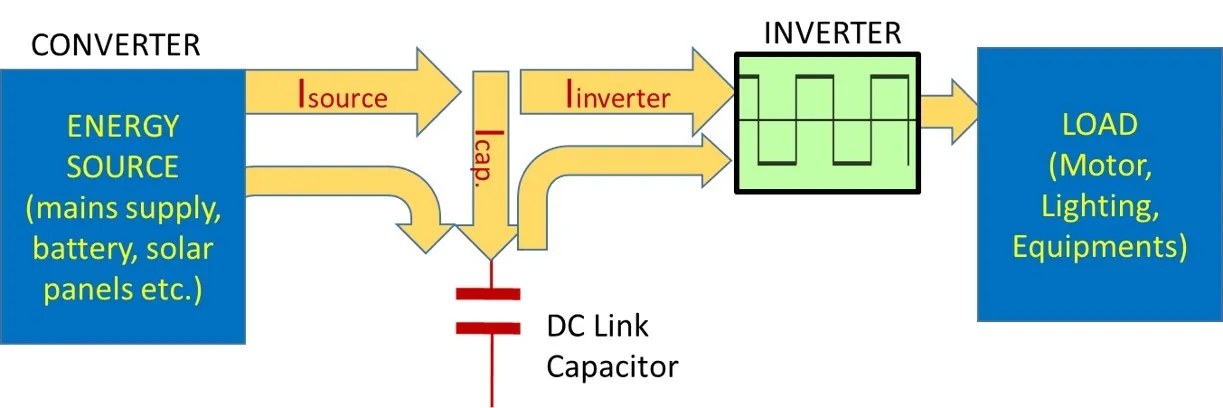Selecting DC Link Capacitors: Insights for Engineers
DC Link capacitors are vital elements in modern power electronics systems, acting as the bridging component between conversion stages—like rectification and inversion—to maintain stable energy flow. For engineers designing high-performance applications, choosing the right capacitor is crucial for ensuring system dependability and efficiency. This article highlights several considerations and best practices to guide you through the selection process without heavily echoing widely available information.
Defining the Function of DC Link Capacitors
At its core, a DC Link capacitor serves as an energy buffer in power conversion circuits. Its primary functions include:
-
Voltage Smoothing: It minimizes fluctuations in the DC bus voltage by filtering out high-frequency switching disturbances.
-
Impedance Reduction: By offering a low-impedance route for alternating current (AC) ripple, it minimizes interference between various stages of conversion.
-
Transient Energy Support: The capacitor temporarily stores or releases energy during rapid load changes, helping to maintain steady operation.
Understanding these roles ensures that the chosen component matches the overall design objectives of your system.
Factors to Evaluate When Choosing a DC Link Capacitor
1. Capacitance and Voltage Headroom
A capacitor’s capacitance must be adequate to counteract voltage ripple while storing sufficient energy. When selecting a device:
-
Capacitance Calculation: Determine the required capacitance by analyzing the acceptable ripple and dynamic behavior of the load.
-
Voltage Tolerance: Ensure the capacitor’s voltage rating comfortably exceeds the highest DC bus voltage encountered. A common rule is to maintain a safety margin of 20-30% above peak operating conditions.
2. Managing ESR and ESL
Two key parameters influencing capacitor performance are the Equivalent Series Resistance (ESR) and Equivalent Series Inductance (ESL):
-
ESR Implications: Lower ESR values are essential to reduce power losses and prevent excessive heating—factors that can compromise longevity.
-
ESL Considerations: Low inductance is needed for optimal performance, especially in systems where high-speed switching is prevalent.
These characteristics are particularly important in applications like pulse-width modulation (PWM), where rapid switching can otherwise lead to inefficiencies.
3. Material and Technology Options
Engineers have several options when it comes to capacitor technologies, each suited to different applications:
-
Film Capacitors: Generally favored for their compact size, high dielectric strength, and superior behavior under high-frequency conditions.
-
Ceramic Capacitors: While ideal for smaller, low-power circuits due to their stability and size, they generally provide lower capacitance values.
-
Electrolytic Capacitors: These can offer large capacitance but often come with limitations regarding voltage resilience, frequency handling, and durability over time due to potential degradation.
The final choice will often involve balancing these technological benefits against cost, size, and system requirements.
4. Thermal Performance and Reliability
Given that DC Link capacitors may operate in environments with significant temperature variations, thermal management cannot be overlooked:
-
Temperature Endurance: Verify that the capacitor operates reliably within the expected temperature range.
-
Heat Dissipation: Consider whether additional cooling measures or circuit board adjustments are needed to manage thermal loads resulting from ripple currents.
-
Service Life: Rely on components with well-characterized longevity, especially for systems where continuous operation is critical.
5. Mechanical Constraints and Integration
Physical dimensions and packaging also play a significant role, particularly in compact modern converter designs:
-
Form Factor: Smaller, high-density systems require capacitors that occupy minimal space without sacrificing performance.
-
Robustness: The selected components must be capable of withstanding mechanical stresses such as vibration, shocks, or other physical impacts common in industrial or automotive settings.
A Step-by-Step Approach to Capacitor Selection
-
Modeling and Simulation:
Begin by creating a detailed simulation of your power electronics system to capture ripple profiles, voltage stress points, and thermal behavior under various operating conditions. -
Specification Mapping:
Develop a comparative matrix listing key specifications—capacitance, ESR, voltage rating, thermal limits, and size—for potential capacitor candidates using datasheets and manufacturer guidelines. -
Prototype Verification:
Conduct experimental tests under realistic operating conditions to assess performance, including dynamic load variations, temperature cycling, and mechanical stress tests. This step is critical to validating your selection. -
Evaluate Longevity:
Factor in accelerated life-test data and historical reliability figures provided by manufacturers to ensure your choice meets the demands of long-term operation. -
Assess Cost and Value:
Consider not only the upfront cost but also factors like maintenance, downtime risks, and replacement expenses over the life of the system.
Final Thoughts
Choosing the proper DC Link capacitor is a multifaceted task requiring a blend of detailed electrical analysis and practical engineering judgment. By aligning capacitance and voltage requirements with low ESR/ESL performance, material benefits, thermal management capabilities, and packaging needs, engineers can design robust and efficient power conversion systems. Employing a structured, simulation-backed, and testing-validated approach leads to enhanced system reliability and longevity, thereby supporting the performance demands of today’s advanced power electronics applications.
This detailed methodology not only improves system efficiency but also extends the operational lifespan of your converters in challenging environments.
Post time: Apr-11-2025


